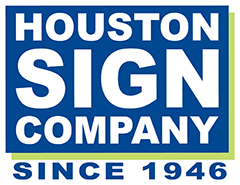CMYK vs. RGB Printing
Whether you’re a design professional or a business owner, understanding the differences between RGB vs. CMYK for printing will help you to reduce issues with your print files, minimize production delays, and result in the highest quality results.
What Is RGB?
RGB stands for Red, Green, and Blue and is used for digital images. If your design is used on any type of screen such as a mobile device, computer screen, or TV screen, then RGB should be your color scheme of choice.
To comprehend how RGB works, you need to understand the concept of additive mixing, a process in which these colors (red, green, and blue) are mixed in a variety of combinations to create a broader range of colors.
Typically, all colors on your screen will appear as pure black, but when red, green, and blue light is added on top of one another, the screen is brightened, and various pigments are formed. In turn, when these primary colors are layered together in equal intensities, it will create a pure white.
Best Files for RGB
As mentioned, if your project is viewed on a digital screen, the RGB color mode should be your go-to choice.
RGB is best used for the following:
- Video
- Images viewed on the web
- Icons
- Digital graphics
- Buttons
- Profile backgrounds
- Infographics
- Online ads
What Is CMYK?
CMYK stands for Cyan, Magenta, Yellow, and Key (black). This color mode is best used for projects that involve printed materials. When creating images (a yard sign design, for example), printers use ink to combine CMYK colors to produce a physical product.
This process is called subtractive mixing. Essentially, all colors start as your background, but each layer of ink creates a preferred color as it reduces the background visibility. When all CMYK colors are mixed, you will be left with pure black.
Best Files for CMYK
CMYK is best used for projects that require physical printing, such as:
- Business Signage
- Vehicle wraps
- Letterheads
- Brochures
- Business cards
- Stationary
- Posters
- Flyers
- Product packaging
- Other forms of business collateral
It should be noted that during the printing process of CMYK colors, minor inconsistencies can sometimes appear due to the subtle variations in the RIP profile used to send files from the computer to the printer being used. Ink sets for each specific printer are also different which leads to variation in colors on your finished product.
So, printing a job a second time may not always come out the same color. As you can very well imagine, this can present problems for your design project. Thankfully, the Pantone matching system offers a solution to this problem.
What Is the Pantone Matching System?
The Pantone matching system is a standardized color reproduction system that allows all parties involved to pinpoint standardized colors every single time. In total, there are thousands of Pantone colors, and each one is numbered and represented in the iconic Pantone formula guide so it can be easily referenced and standardized.
Companies that care about brand integrity will often choose Pantone colors for their logo, ensuring it will remain consistent everywhere it appears.
For example, let’s say a client approaches a designer with a design they wish to print. In most instances, they’ll have a general idea of the color(s) they want – the color that falls between purple and violet, for instance. This may look one way to them, but another way to the designer, and yet another way depending on the RIP Profile and inks used to print your product.
To keep both parties on the same page, a Pantone book can be used to select a Pantone code associated with a specific color, so no matter what, there will always be a source of reference.
For instance, the subsequent code for purple is Pantone PMS 267c. This code can always be referenced at any time in the future, providing clarity to the exact colors used in the design.
The greatest advantage of the Pantone color system is that it brings clarity to printing projects, eliminating inconsistencies between RGB and CMYK, thereby reducing unnecessary expenses.
Is CMYK or RGB Better for Printing?
While both color modes have their unique uses, CMYK is the superior choice for printing projects. If there is a specific color you are aiming for, communicate the Pantone colors with your printer or production team to ensure the CMYK printer files match with the actual printed product to avoid inconsistencies.
Now that you have a general understanding of the differences between RGB vs. CMYK, you can approach your next project with the confidence that you’re making the right decisions to produce the highest quality results.
Contact Houston Sign for Premium Business Signage
Need to tackle a printing job? Houston Sign Company is your one-stop shop for custom office wall signs, custom directional signs, banners in Houston, and more! Leave your printing needs to the professionals.


